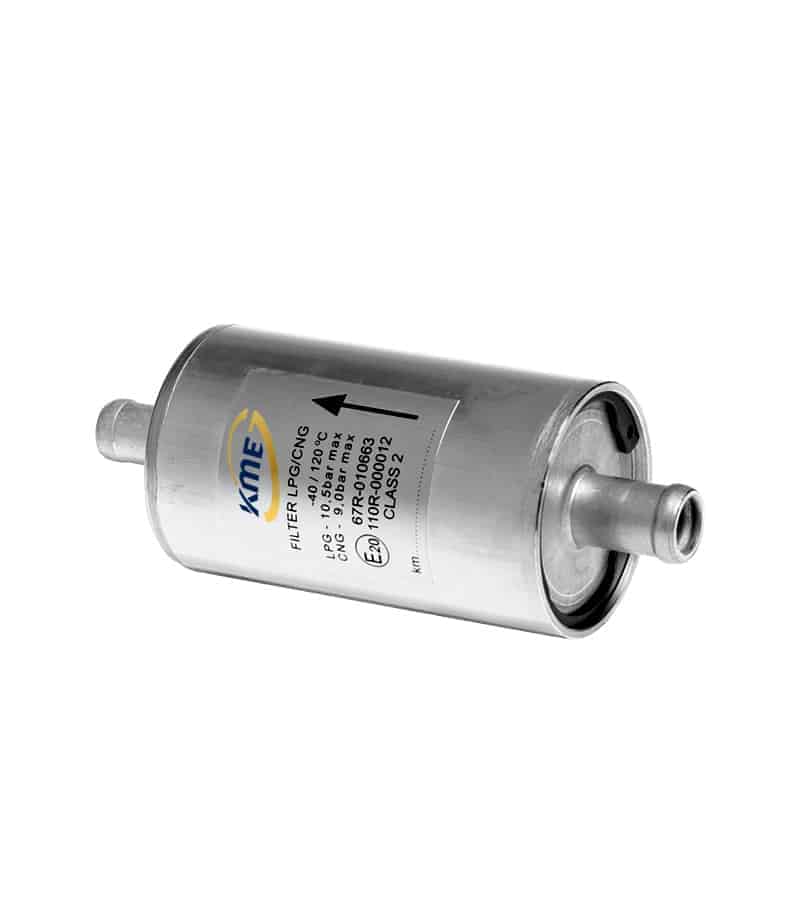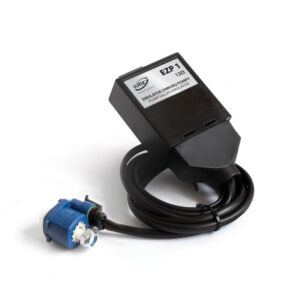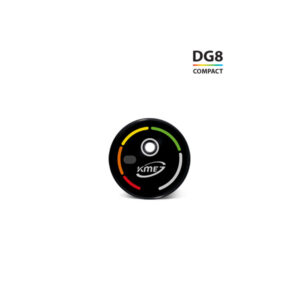Description
A gas phase filter with a replaceable glass fiber cartridge covered on both sides with a layer of polyester.
KME offers high-quality gas phase filters in its complete assembly kits. The filter is installed between the reducer / evaporator and the injectors and its task is to filter the impurities contained in LPG, which are impossible to capture before gas expansion.
The filter should be installed in a place enabling its easy servicing, which consists in removing the securing pin, replacing the cartridge, snapping the housing into place and sticking a new sticker with the mileage at which it is recommended to replace it again. All the necessary elements along with the metallized sticker are included in the set, constituting the service kit.
The heart of the filter is of course the filter material. Why, as the only Polish manufacturer of gas injection systems, we use such a complicated technology? It is the perfect combination of efficiency, absorbency, flow resistance and price. The last parameter is easy to understand, but below we will try to explain the advantages of this filter from a more technical point of view, using the information obtained directly from the filter manufacturer.
Basic definitions
Filter
It is a device for separating solids from liquids and gases by means of one or more porous partitions, retaining solids and permeating liquids and gases.
Filtration
A method of separating solids from liquids and gases by mechanically retaining one of the substances. The liquid or gas released in the process of filtering partially or completely from solid particles is called filtrate.
Effectiveness
The effectiveness (efficiency) of treatment is the ability to trap pollutant particles of a certain size. It is the ratio of the mass of pollutant particles that are captured by the filter to the mass of all particles fed to the filter. The effectiveness parameter is expressed in% (max 100%).
Absorbency
Absorbency (also called capacity) is the ability to absorb a certain amount of dirt without causing the pressure of the operating fluid to drop above the maximum allowable value.
Capacity
It is the amount of service fluid that passes through a given filter surface per unit time, i.e. the ability to pass the service fluid.
Flow resistance
Operating fluid passing through the filter meets resistance, which is set by the filter material. This parameter is referred to as the pressure difference upstream and downstream of the filter.
“Beta” ratio
It is the amount of contaminant particles in the operating fluid before the medium divided by the number of particles behind the medium. A “Beta” factor can be determined for each range of particle diameters measured.
“Beta” = number of particles before medium / number of particles behind medium
[1- (1 / Beta)] x100 = effectiveness
Microscopic photos of sample materials

The most commonly used material as a filtration barrier is a cellulose-based material (paper) with various additives that affect the properties and therefore the use of the material as a filtration barrier. Proper selection of the components of the filter material is essential for the filtration parameters. Depending on what will be filtered, how long, under what conditions and with what accuracy, the appropriate filter material should be selected. By selecting combinations of various cellulose fibers and saturating them with appropriate substances, most often resins, we can adjust the filtration properties of a given medium and select the most appropriate material with parameters that meet the requirements for a given filter.
Rules for the selection of the filter material
In addition to purely filtration parameters, such as permeability, pressure drop, porosity or filtration efficiency, a very important element is resistance to external factors (moisture, temperature, chemicals, fire resistance), which can be regulated by soaking the filter papers with chemicals (e.g. resins, oil) affecting these properties.
All the above selection elements boil down to one goal: that the filter medium meets all the parameters that we assumed will be the most suitable for a given filter and that the filter will meet the highest requirements of the modern market.
Standard filter materials used in partition filters are subject to several rules:
– the larger the surface area, thickness and permeability of the filter material, the greater the absorption (capacity)
– the denser the material, the greater its effectiveness
– the lower the resistance, the greater the permeability,
– low density gives high capacity and vice versa,
– the greater the efficiency, the smaller the capacity.
Theoretically, the ideal filter medium is one that would be 100% effective in removing all types of contamination and at the same time would be characterized by infinite absorption and durability. It is impossible to achieve, but the aim is to use solutions that can meet the above conditions to the highest possible degree. When designing filters and filter inserts, we tries to ensure the greatest possible efficiency and the largest possible filter capacity, while maintaining high capacity and low flow resistance.
Table of parameters of filter materials

Conclusions
As can be seen from the above, the best filter material is glass fiber, which:
– achieves the greatest filtration efficiency, i.e. efficiency,
– shows resistance to all kinds of external factors, such as: humidity, temperature, chemicals and fire resistance.
KME filters use glass fiber covered on both sides with a layer of polyester to achieve the highest filtration efficiency and resistance to external factors.













